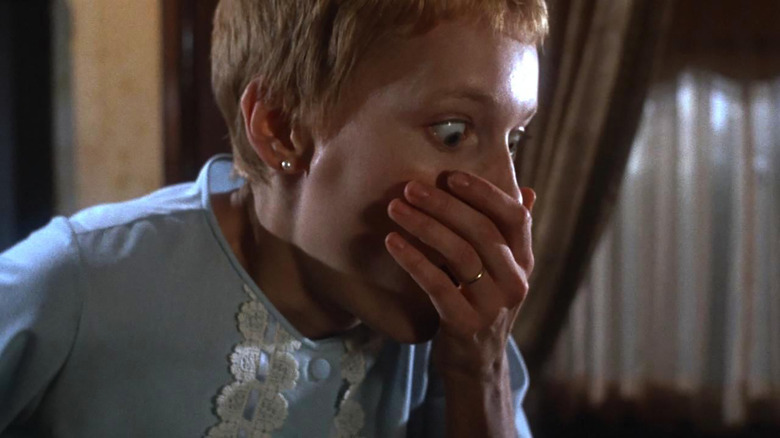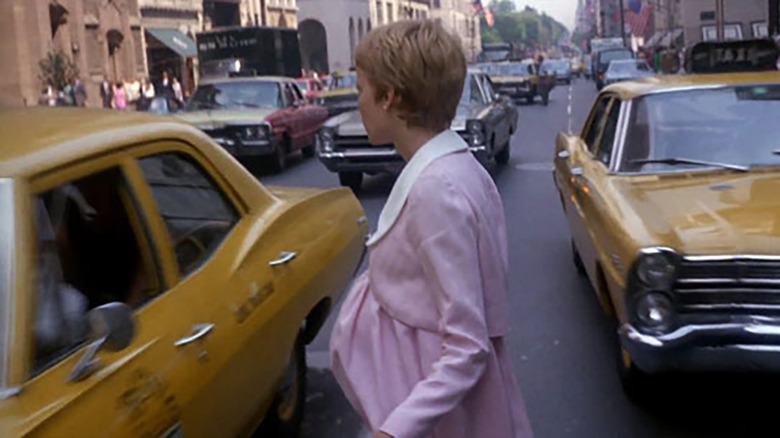This Dangerous Rosemary's Baby Stunt Was Much More Real Than You Think
Thanks to director Roman Polanski's history of being a sexual predator and fleeing the United States to avoid accountability, talking about his influential work is like performing a balancing act upon a moral tightrope. Shot a decade before he would be arrested and charged for committing especially heinous acts, "Rosemary's Baby" is considered by many to be one of the most important horror films in existence. Based on the book of the same name by Ira Levin (who also wrote "The Stepford Wives"), "Rosemary's Baby" stars Mia Farrow as the pregnant Rosemary Woodhouse, and is an exploration in paranoia, gaslighting, religious persecution, the occult, and the women's liberation movement.
After moving into a New York City apartment building with an unsettling history, Rosemary believes that there is something terribly wrong with her pregnancy despite her struggling actor husband Guy (John Cassavetes) insisting everything is fine. As she grows increasingly isolated, strange things begin happening and before Rosemary can fully figure out what's going on, Rosemary gives birth to her child and comes face to face with the horrific truth. "Rosemary's Baby" terrified audiences to nearly universal critical acclaim, but much like Stanley Kubrick on the set of "The Shining," some of Polanski's directorial choices to elicit fear were unethical at best, with one moment in particular shot in a way that would be impossible today.
Rosemary Almost Meets Her Maker
In one pivotal scene, a still-pregnant Rosemary Woodhouse aimlessly walks into traffic while dazed and preoccupied with her own thoughts. Rather than shut down the road and hire stunt drivers, Polanski instead directed Farrow to walk into very real, very busy Manhattan traffic. Farrow obviously expressed legitimate concern for her own safety, to which Polanski allegedly responded with, "nobody will hit a pregnant woman." Somehow, Polanski convinced Farrow to do the scene, but since no one else was willing to take the risk, Polanski operated the handheld camera and followed her as she waded through the street, surrounded by very real screeching tires and honking horns from confused and ticked-off drivers.
Polanski and Farrow are both lucky that the two were not struck by a vehicle in the process, but this is just another example of a supposed "auteur" filmmaker sacrificing the safety and well-being of a performer for the sake of "art." Polanski's belief that Farrow would be safe due to her character's visible pregnancy is deeply tragic, as he would learn firsthand the following year that a woman's pregnancy status will not guarantee her safety. Had something happened to Mia Farrow, we'd be rightfully calling him out for his negligence, but since she walked away unscathed, his decision is incorrectly hailed as brilliant artistry.

